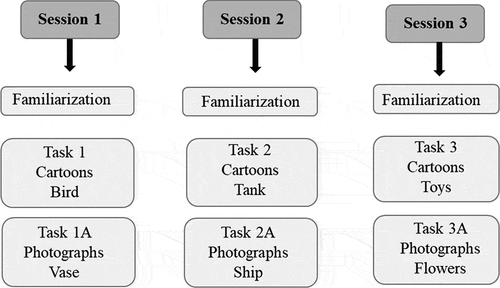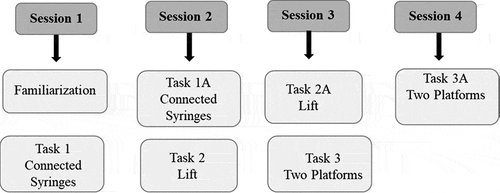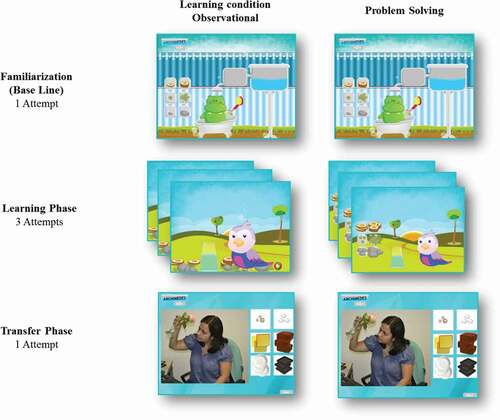Figures & data
Table 1. Number of key elements provided by each solving problem task
Figure 3. Percentage of achievement on Archimedes’ task. T# = Type of task, A = second presentation of the task.
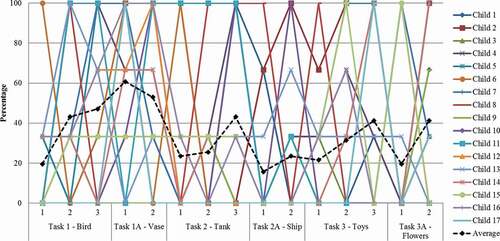
Figure 4. Percentage of achievement on t Air pressure task. T# = Type of task, A = second presentation of a task.
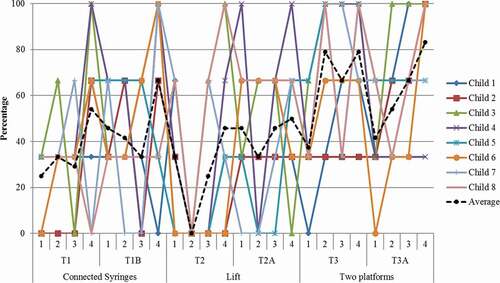
Figure 5. Trajectories of criteria used to solve the problem in Archimedes’ task. NK: not using a key element, PK: using a key element of a previous task which is incorrect for the current task, and CK: using a correct key element for the current task. T# = Type of task, A = second presentation of the task.
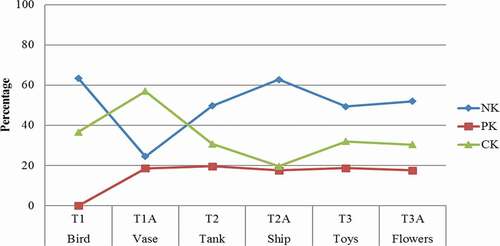
Figure 6. Trajectories of criteria used to solve the problem in Air Pressure task. NK: not using a key element, PK: using a key element of a previous task which is incorrect for the current task, and CK: using a correct key element for the current task. T# = Type of task, A = second presentation of the task.
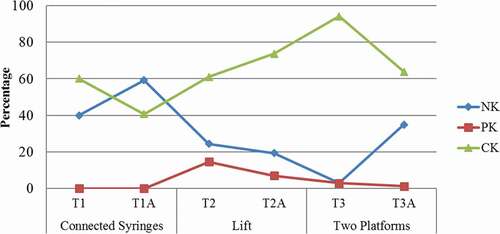
Figure 7. Trajectories of criteria used to solve the problem per task and attempt in Archimedes’ task. NK: not using a key element, PK: using a key element of a previous task which is incorrect for the current task, and CK: using a correct key element for the current task. T# = Type of task, A = second presentation of the task.
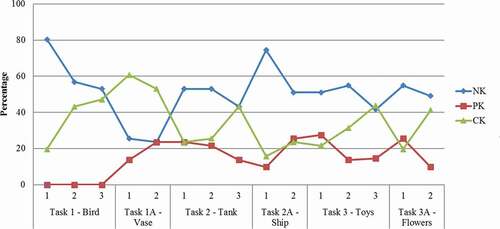
Figure 8. Trajectories of criteria used to solve the problem per task and attempt in Air Pressure task. NK: not using a key element, PK: using a key element of a previous task which is incorrect for the current task, and CK: using a correct key element for the current task. T# = Type of task, A = second presentation of the task.
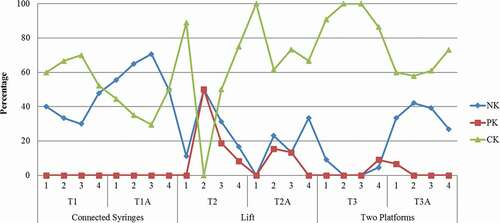
Table

